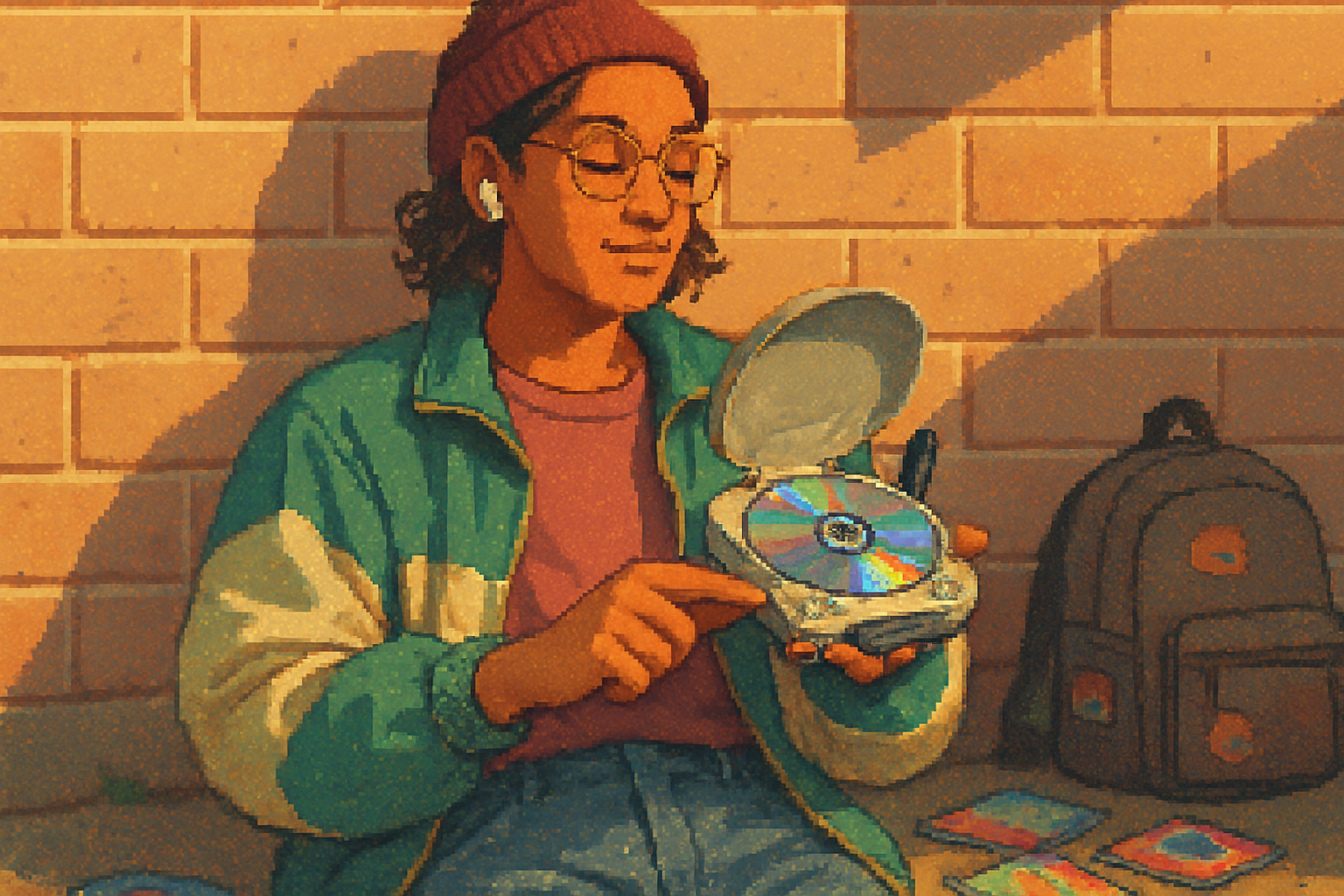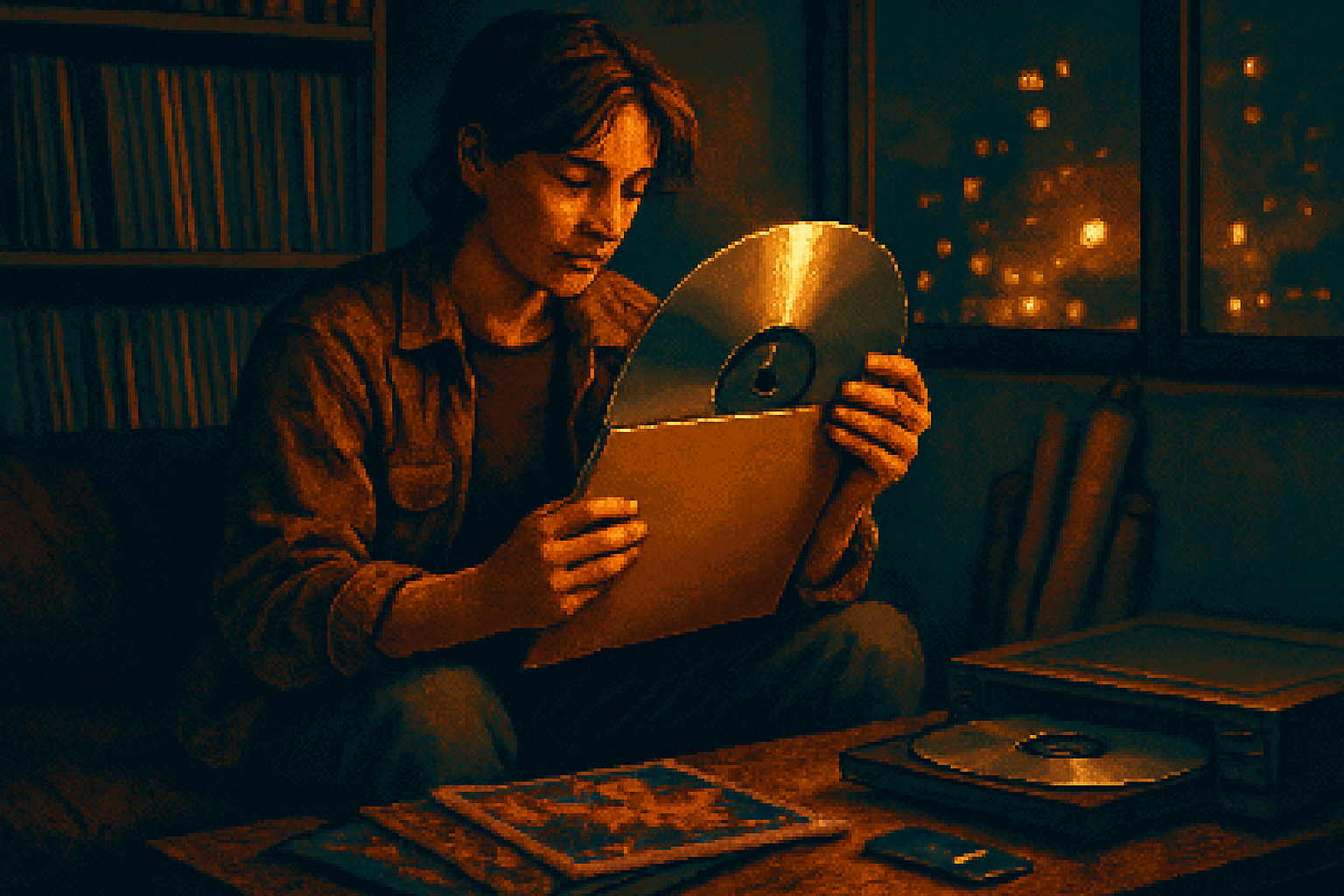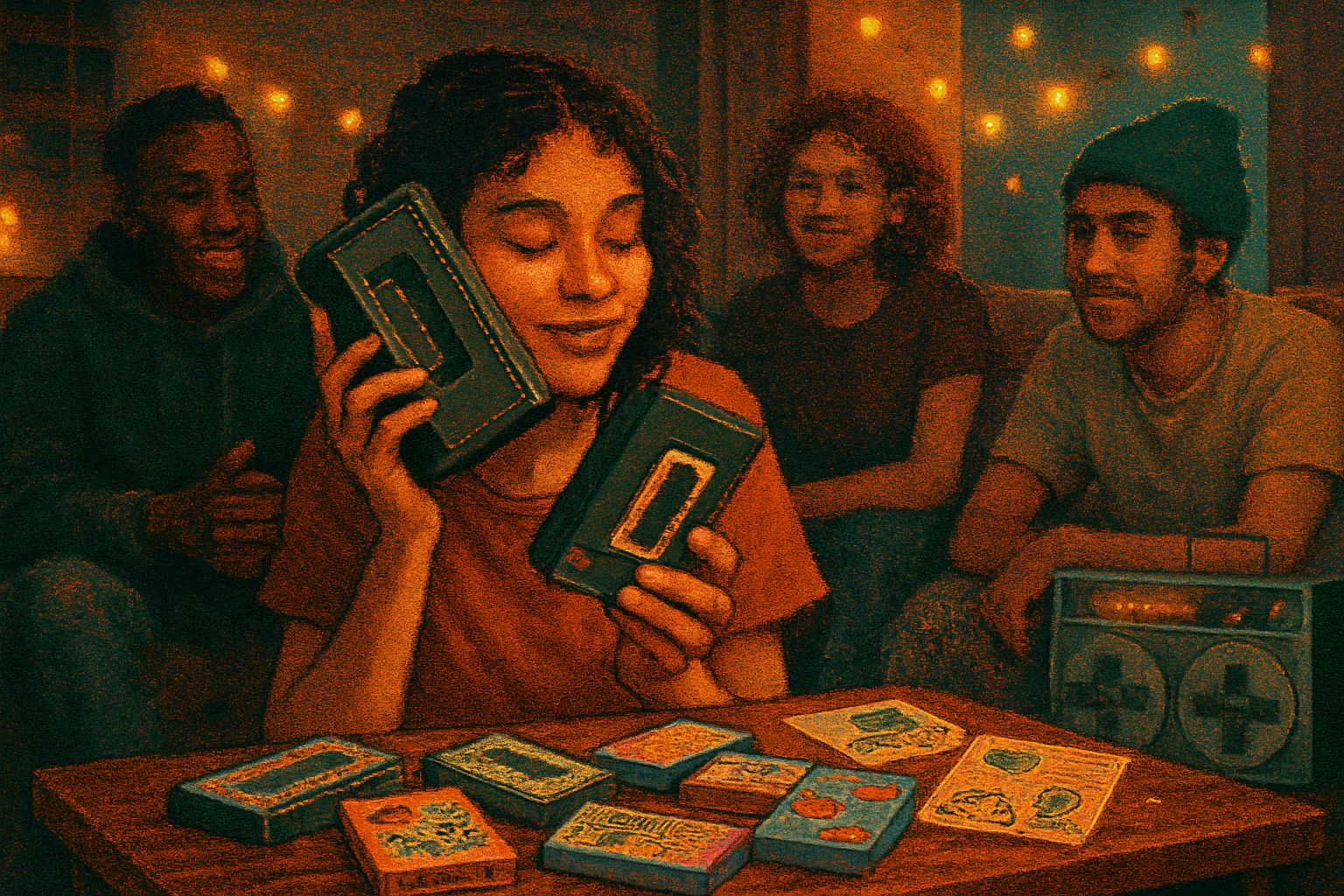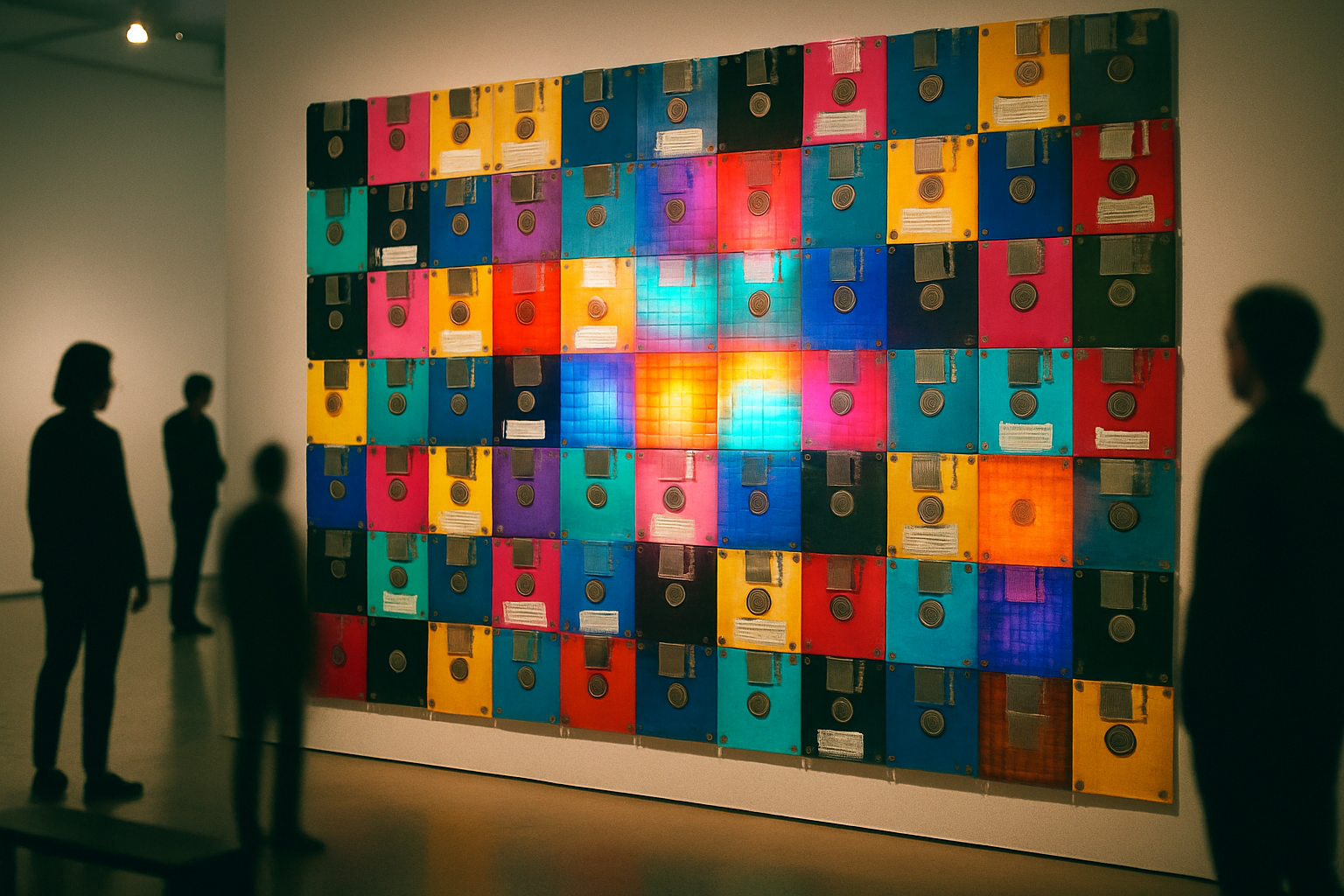· culture · 6 min read
The Discman Revival: Why Millennials are Rushing to Buy Portable CD Players Again
A surprising wave of millennials are rediscovering the Discman. This article explores the cultural forces - nostalgia, resistance to streaming, tactile ritual and aesthetic - driving the portable CD player’s comeback and what it tells us about music, memory and attention in the digital age.

Introduction
For a generation raised on file icons and infinite playlists, the sight of a silver Discman flipping open to reveal a glowing CD feels delightfully anachronistic. Yet in coffee shops, thrift stores and online marketplaces, portable CD players are moving again - bought by people who grew up with them and by younger listeners charmed by their analog edge. This isn’t just a fad; it’s a cultural moment that reveals how many millennials are negotiating convenience, identity and attention in a streaming world.
A quick history (and what a Discman actually is)
Launched by Sony in 1984 as the “Discman” (a portable variant of the home CD player), the device allowed listeners to carry digital audio in a physical format for the first time [https://en.wikipedia.org/wiki/Discman]. Portable CD players dominated personal music through the 1990s and early 2000s before MP3 players and smartphones made them seem obsolete.
The CD itself - Compact Disc Digital Audio - was introduced in the early 1980s and represented a major step in digital portability and ownership [https://en.wikipedia.org/wiki/Compact_Disc_Digital_Audio].
Why now? The emotional drivers behind the revival
Several overlapping reasons explain why millennials (and some Gen Z listeners) are buying Discmen again:
Nostalgia and autobiographical memory - Objects trigger memory and mood. For many millennials, the Discman is a tactile portal to adolescence: late-night mixtapes, road trips, and first concerts. Nostalgia is a well-documented psychological resource that provides comfort and continuity [
Ritual and materiality - Streaming excels at access; physical formats demand ritual. Holding a jewel case, reading liner notes, and pressing a play button are deliberate acts that slow listening and make it more meaningful.
Resistance to algorithmic curation - Playlists optimized by algorithms can feel efficient but impersonal. Choosing a CD or a burned mix is an act of curation that asserts taste, agency and a preference for fixed, human-made sequences.
Attention and focus - In an era of infinite choice and constant notifications, the Discman offers a bounded listening session: a set run time, no autoplay, and no interrupting push notifications.
Aesthetic and fashion - Retro tech functions as a stylistic statement. Portable CD players - sometimes worn on a belt or displayed on a bookshelf - convey a particular ‘90s vibe that appeals to fashion and lifestyle aesthetics.
Rebellion against streaming culture
The revival isn’t merely about nostalgia; it’s a subtle cultural pushback. Streaming platforms have transformed how music is distributed, discovered and monetized, producing benefits and costs. Critics point to several negative effects of streaming culture: reduced artist revenue in some cases, obsessive playlist optimization, and a constant flood of new releases that can erode deep listening.
Choosing a Discman is, for some, a deliberate stance: a rejection of endless discovery in favor of finite, owned collections; a refusal to let algorithms dominate what and how they hear. That stance is not anti-tech - many Discman buyers still use smartphones or streaming services - but it is pro-intentionality.
The rituals that make CDs feel special again
Part of the Discman’s charm is the rituals that accompany it:
The mixtape reborn - Burning CDs with carefully ordered tracks recaptures the mixtape impulse - message, mood and personality bundled in a sequence.
Album-first listening - Where playlists encourage shuffle, CDs revalue the album as a narrative or artistic statement.
Physical tangibility - Cover art, liner notes and the physicality of the disc itself provide textured context and a connection to the artist.
Social gifting and exchanges - Handing someone a CD becomes a personal gesture in a way that sending a link rarely is.
Sound quality, myths and realities
Claims that physical media automatically sounds better than streaming are complicated. CDs offer lossless digital audio (PCM) at 16-bit/44.1 kHz - a technically transparent format. Many streaming services now offer high-bitrate or lossless tiers as well. For many listeners, though, the perceived “warmth” or engagement comes less from measurable fidelity and more from context: the act of listening, the medium’s constraints and the absence of interruptions.
Where Discmen are coming from: thrift, vintage, new models and modding
Thrift and secondhand markets - Many buyers find functioning Discmen in thrift stores, eBay, Etsy and local marketplaces. The price point and unpredictability add to their charm.
Refurb and boutique makers - Entrepreneurs and small shops refurbish classic models or sell cleaned, serviced units with modern upgrades (better batteries, line-out jacks).
Modding and DIY - Enthusiasts repair skip protection, replace batteries with lithium packs, or add Bluetooth transmitters so a Discman can pair with modern headphones or speakers.
Community, collecting and identity
As with vinyl, the Discman revival forms small communities: online forums, Reddit threads, Instagram hubs and local meetups where people swap tips for repairs, share favorite discs and celebrate obscure models. Collecting specific editions, limited-release CDs, or artist-signed copies becomes a way to signal knowledge and commitment.
Environmental and economic angles
Buying secondhand hardware can be a lower-consumption choice than constantly upgrading to the newest streaming device. At the same time, physical media manufacturing has environmental costs - plastic jewel cases, discs, packaging - so the sustainability story is mixed and depends on reuse, longevity and consumer behavior.
What this revival tells us about millennials and media
The Discman comeback highlights some broader generational patterns among millennials:
A desire to balance convenience with meaningful experience. Millennials grew up as the internet matured; they often seek both the utility of digital tools and the authenticity of analog rituals.
Cultural bricolage - Combining old and new - a vintage Discman connected to a smartphone via Bluetooth adapter - typifies how millennials repurpose the past to fit present needs.
Identity and taste economy - Physical media conveys taste in a way that ephemeral streams rarely do. Owning, displaying and curating a music collection is a social signal.
Practical tips for new Discman buyers
Where to look - Thrift stores, local record shops that carry used CDs, online marketplaces like eBay, and specialty refurbishers.
What to check - Laser read functionality, anti-skip feature, headphone jack, battery compartment condition. If buying used, ask about return policies and tests.
Simple upgrades - Replace old NiMH/NiCd cells with modern lithium packs (careful with safety), add a Bluetooth transmitter for wireless headphones, or seek professional refurbishment.
Care - Keep discs clean, store them out of sunlight, and avoid forcing trays or sticky buttons.
The bigger cultural picture
The Discman revival sits alongside other physical-media resurgences - vinyl records, cassettes, zines - as part of a wider cultural revaluation of materiality. These revivals are not just about nostalgia for its own sake; they’re attempts to reclaim modes of attention, to create slower rituals and to express identity in material form.
Whether the Discman becomes a sustained subculture or a passing aesthetic trend, its resurgence reveals enduring human desires: for meaningful rituals, for physical connection to art, and for ways of listening that resist the logic of infinite streaming.
Conclusion
The Discman’s comeback is equal parts nostalgia, rebellion and style. For many millennials, it offers something that streaming does not: a bounded listening experience, a tactile ritual, and a statement about how they want to relate to music. More than a consumer quirk, this revival is a cultural signal - a reminder that in an age of endless access, people will still seek ways to make listening matter.
References
- Discman (Wikipedia): https://en.wikipedia.org/wiki/Discman
- Compact Disc Digital Audio (Wikipedia): https://en.wikipedia.org/wiki/Compact_Disc_Digital_Audio
- Nostalgia (emotion) (Wikipedia): https://en.wikipedia.org/wiki/Nostalgia_(emotion)
- Vinyl revival (Wikipedia): https://en.wikipedia.org/wiki/Vinyl_revival



